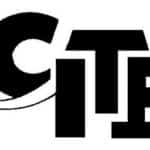Class-6 Science Notes- Chapters 3&4
Chapter 3
- A fabric is made up of yarns arranged together. Yarns are further made up of fibres.
- The process of making yarn from fibres is called spinning.
- The two main processes of converting yarns into fabrics are weaving and knitting.
- The process of arranging two sets of yarns together to make a fabric is called weaving. Weaving of fabric is done on looms which can be either hand operated or power operated.
- In knitting, a single yarn is used to make a piece of fabric. It can also be done both by hand and machines.
- Fibres are of two types:
- Natural fibres: those obtained from plants and animals. For example, fibres of some fabrics such as cotton, jute, silk and wool. Cotton & jute are obtained from plants while wool and silk are derived from animals.
- Synthetic fibres: fibres made from chemical substances and not obtained from plant or animal sources. For example, polyester, nylon and acrylic.
Cotton:
- Cotton plants are usually grown at places having black soil and warm climate.
- The fruits of the cotton plant are cotton bolls.
- After maturing, the bolls burst open and the seeds covered with cotton fibre can be seen.
- from these bolls, cotton is usually picked by hand.
- Fibres are then separated from the seeds by combing. This is called ginning of cotton.
Jute:
- Jute fibre is obtained from the stem of the jute plant.
- It is cultivated during the rainy season.
- In India, it is mainly grown in West Bengal, Bihar and Assam.
- The jute plant is normally harvested when it is at flowering stage.
- The stems of the harvested plants are immersed in water for a few days.
- The stems rot and fibres are separated by hand.
Chapter 4
- Properties of Materials
- Appearance: Materials that have lustre are usually metals. Some metals often lose their shine and appear dull, because of the action of air and moisture on them.
- Hardness
- Soluble or insoluble
- Objects may float or sink in water
- Transparency- Those materials through which things can be seen are called transparent. Materials through which we cannot see are called opaque. Materials through which objects can be seen, but not clearly, are known as translucent.











